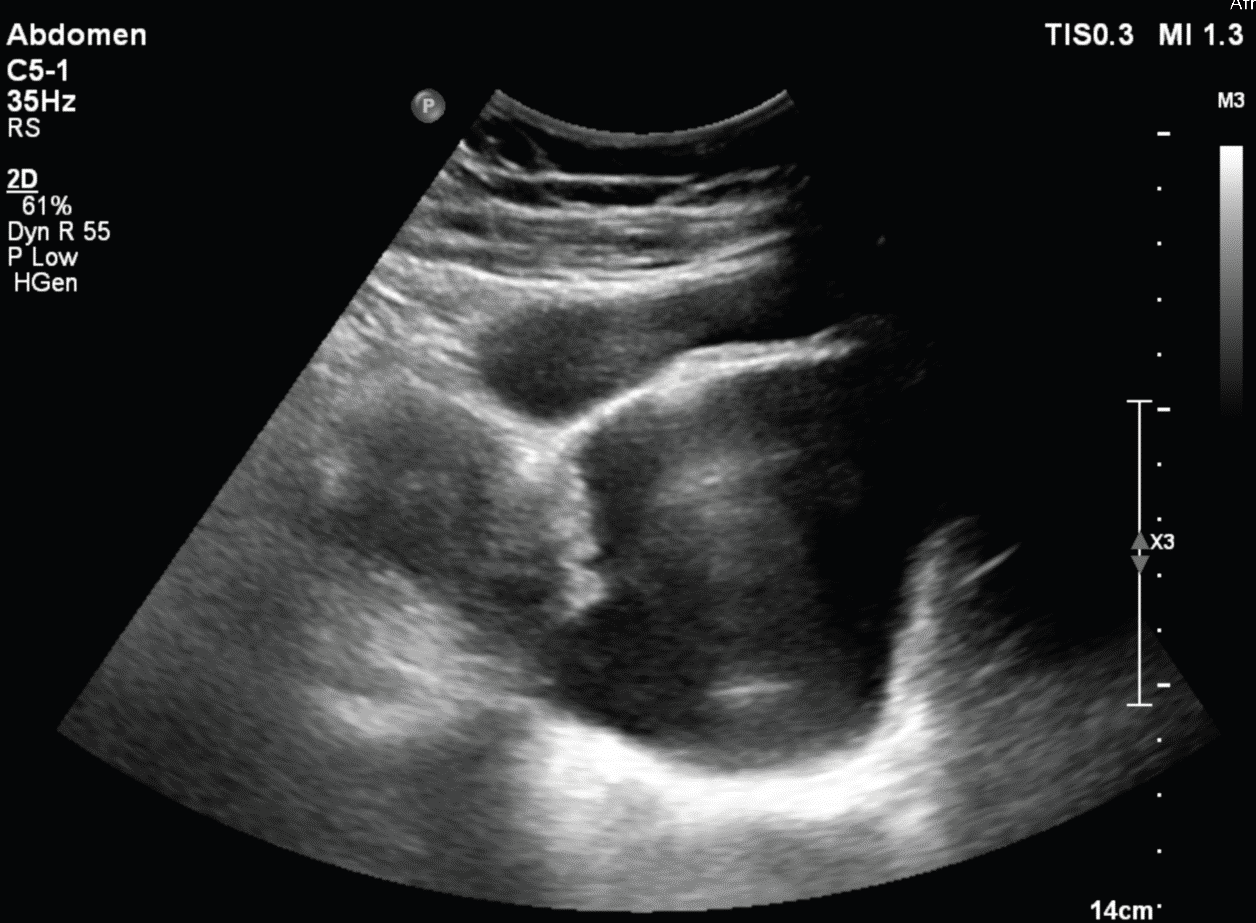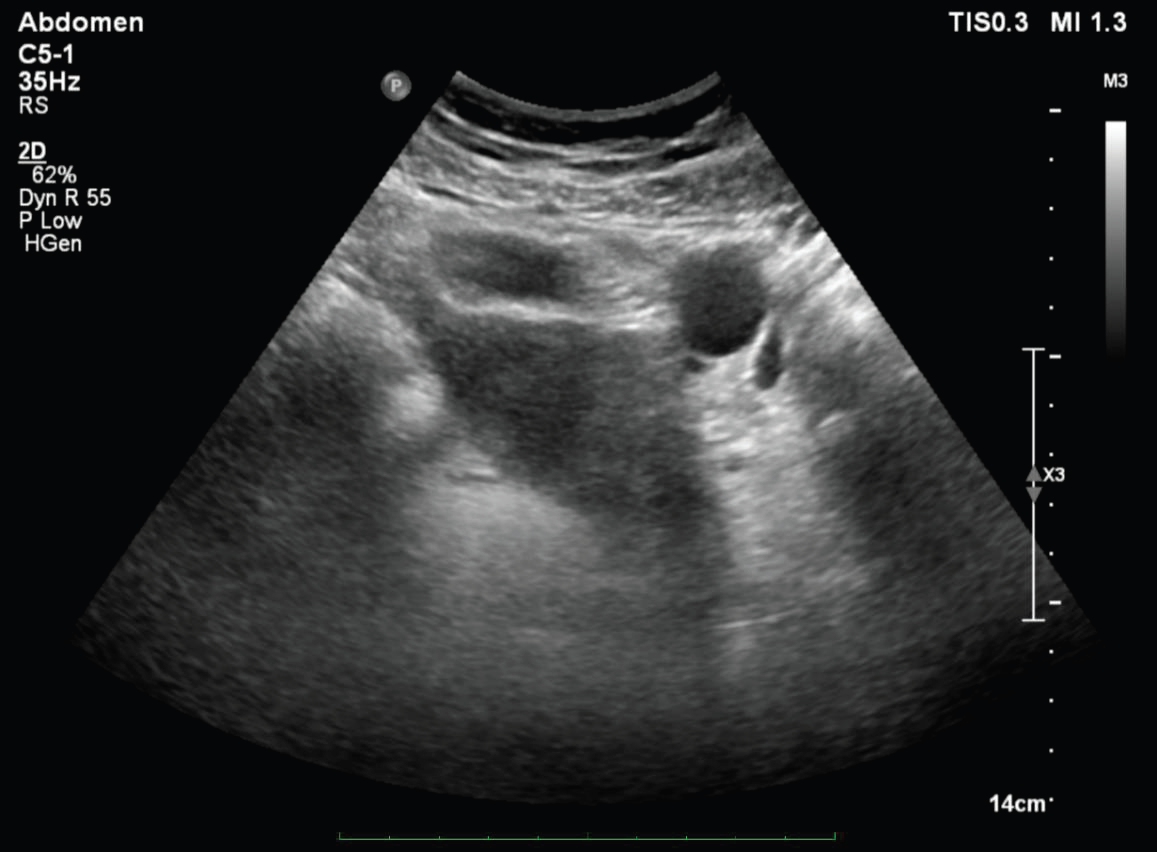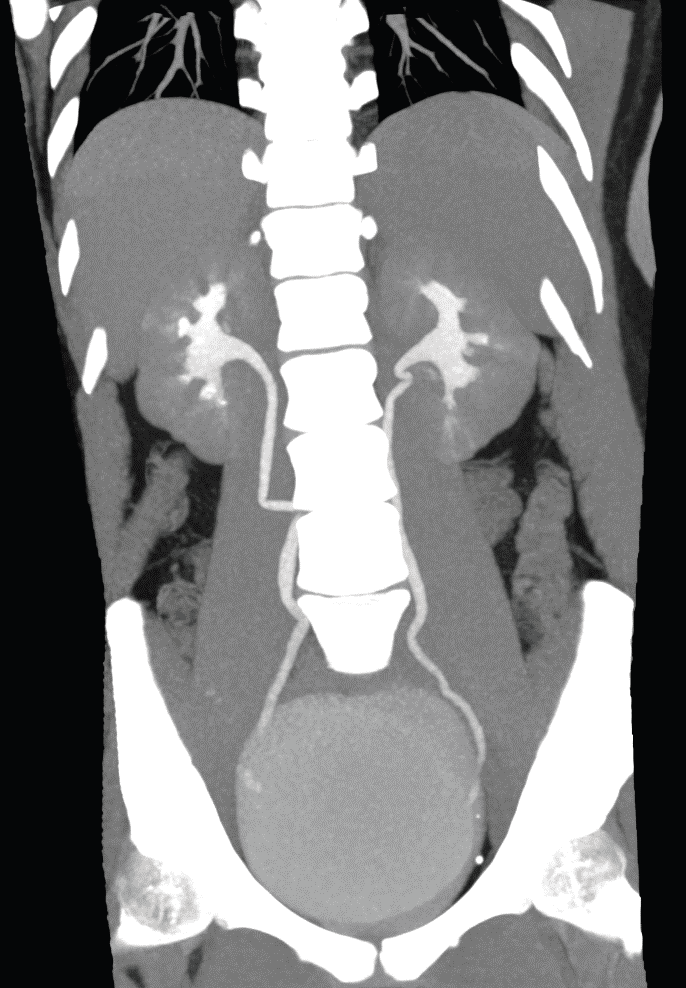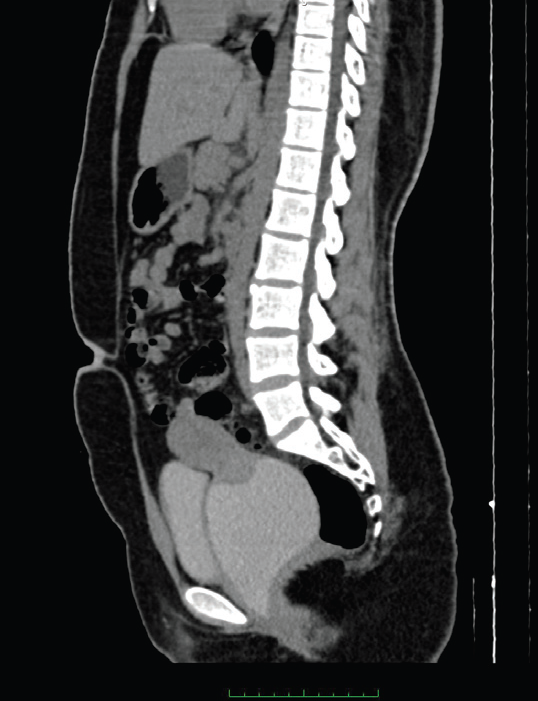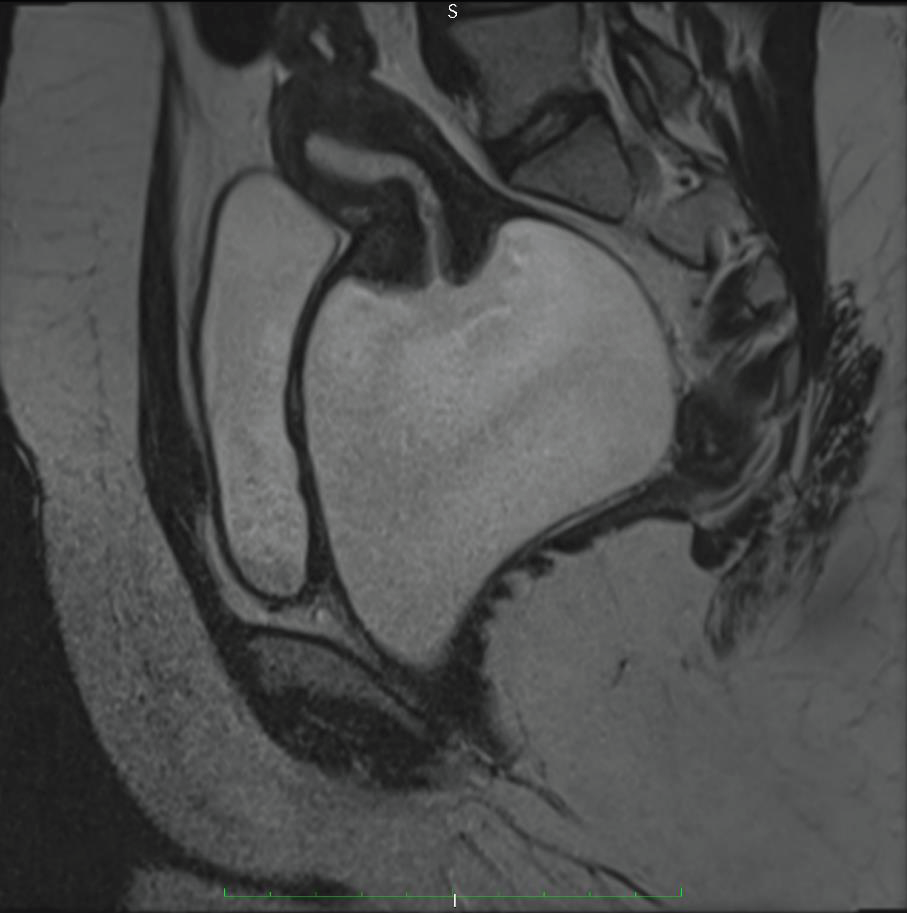Case Report
Transient Urocolpos Secondary to Vesico-Vaginal Reflux
Pereira S, Kirthi R and Sayed SF*
Department of Radiodiagnosis and Interventional Radiology Goa Medical College Goa, India.
*Corresponding author:Shoaib Farook Sayed, Department of Radiodiagnosis and Interventional Radiology Goa Medical College Goa, India. E-mail Id: shoaibsayed2699@yahoo.com
Copyright: ©2024 Pereira S, et al. This is an open access article distributed under the Creative Commons Attribution License, which permits unrestricted use, distribution, and reproduction in any medium, provided the original work is properly cited.
Article Information:Submission: 21/09/2024; Accepted: 12/11/2024; Published: 15/11/2024
Abstract
In this case report we present the clinical and radiological findings of a 28-year-old patient presenting with primary infertility and post-coital bleeding with no urinary complaints. Imaging of this patient revealed urocolpos, which would vanish after voiding. Owing to its intermittent nature, transient urocolpos secondary to vesicovaginal reflux, presents a diagnostic dilemma. Radiologists must be aware of this rarely diagnosed entity so as to alleviate the patients concerns.
Introduction
Vesico-vaginal reflux (VVR) is defined as reflux of urine into
the vaginal vault in supine or upright position during voiding. It is
considered as a behavioral disorder and is commonly encountered in
pre-pubertal girls. Anatomical abnormalities such as ectopic insertion
of the ureter and vesico-vaginal fistula (VVF) needs to be ruled out in
order to diagnose this condition.
Distention of the vaginal vault with urine is defined as urocolpos
which usually occours secondary to vesico-vaginal fistula orvesicovaginal
reflux.
Patients may be completely asymptomatic or they may experience
symptoms of urinary tract infections, vulvo-vaginitis, and post-void
dribbling. Rarely, patients may experience infertility, as was seen in
our case.
Case Presentation
A 28-year-old female married for 2 years, presented to the
out-patient department (OPD) of obstetrics and gynecology with
complaints of infertility and post-coital bleeding. She was nulligravida
and had regular unprotected coitus. It was revealed that the patient
was a known case of polycystic ovarian disease and was managed with
lifestyle modification for the same. No other significant past medical
or surgical history was provided. The patient denied any urinary
complaints.
General examination was unremarkable. Laboratory workup,
including complete hemogram, renal function tests, liver function
tests, lipid profile, and thyroid function tests revealed no abnormalities.
Per vaginum examination revealed a normal-sized and anteverted
uterus. The cervix appeared bulky and the internal os was closed. Per
speculum examination revealed erosions and inflammation over the
entire ectocervix.
The patient was then referred to the Department of radiodiagnosis,
for a pelvic ultrasound. Transabdominal ultrasound (TAS) revealed
an anechoic cystic lesion posterior to the urinary bladder, inferior
to the cervix, distending the vagina and displacing the distended
urinary bladder anteriorly. On subsequently performed post-void
ultrasound, this cystic lesion was completely unvisualised, and the
urinary bladder was collapsed. The uterus and endometrial thickness
appeared normal. The left ovary showed a small simple follicular cyst.
The right ovary was normal in size and appearance.
Subsequently, a CT IVU was performed, which revealed contrastfilled
urine is seen to opacify the vaginal cavity and the urinary
bladder, confirming it to be urocolpos. Both ureters were seen to insert
normally into the urinary bladder. No duplication/ectopic ureter,
vesicovaginal fistula, or bladder diverticulum were demonstrated.
MRI pelvis with MRI urography was performed one week
later, which revealed a fluid/urine-filled vaginal vault. No evidence
of vaginal septum, mullerian duct anomalies, or any other uterine
abnormalities noted. Urinary bladder appeared normal.
2 weeks later, diagnostic cystoscopy and vaginoscopy were
performed under spinal anesthesia, which revealed a low-capacity
urinary bladder (100 ml) with normal vesico-ureteral junctions.
The cervix appeared inflamed on vaginoscopy. Neither cystoscopy
Figure 1:Transabdominal ultrasound (TAS) of the pelvis reveals anechoic
fluid distending the vagina, suggestive of hydrocolpos (blue arrow, A). The
urinary bladder (anterior to the vagina) is partially distended (orange arrow,
B). The uterus and cervix appear normal (green arrow, C)
Figure 2: Post void transabdominal ultrasound (TAS) of the pelvis reveals
complete un visualization of the fluid filled vaginal cavity, suggestive of
transient urocolpos. The left ovary shows a simple follicular cyst (blue arrow,
A). The urinary bladder is collapsed (orange arrow, B).
Figure 3:Coronal MIP section of the CT-IVU reveals normal insertion of the
ureters into the urinary bladder (red circles).
Figure 4:Sagittal section of CT IVU reveals contrast filled urine opacifying
the vagina and the urinary bladder. No fistulous tracts were seen between
the vagina and urinary bladder.
Figure 5:T2W sagittal section of pelvis reveals fluid distended vaginal
cavity. No vaginal septum noted.
nor vaginoscopy revealed any abnormal communication between
the vagina and urinary bladder; thus, confirming the diagnosis of
transient urocolpos secondary to vesico-vaginal reflux.
Discussion
Urocolpos is the distension of the vaginal vault with urine. It can
be obstructive or non-obstructive. Non-obstructive urocolpos occurs
secondary to VVR, cerebral palsy, and spastic pelvic floor muscles.
Obstructive urocolpos occurs secondary to anatomical abnormalities
like vaginal septum, labial adhesions, ectopic ureteral insertion, or
duplicated ureter.[1]
Urocolpos secondary to VVR is considered a behavioral
abnormality usually encountered in prepubertal and adolescent girls.
The condition may resolve in adulthood, explained by the descent of
the urinary bladder and anatomical correction of the vesico-urethral
angle [2].
Usually, these patients are asymptomatic, and hence the
condition may be incidentally detected. Asymptomatic bacteriuria is
common in them. In symptomatic patients, they may present with
dysuria, nocturia, and post-void dribbling of urine. In our case, the
patient had no urinary complaints; instead, the patient present with
primary infertility and post-coital bleeding. The infertility could be
partly attributed to PCOD and the urocolpos, as the urine-mixed
semen would be eliminated each time the patient voids. The postcoital
bleeding could be attributed to the extensive inflammation and
erosions over the ectocervix secondary to irritation by urine.
Radiology plays a key role in the diagnosis of this condition as
well as distinguishing obstructive from non-obstructive urocolpos.
First line imaging modality is a pelvic ultrasound. A fluid collection
in the vagina that disappears after micturition, in the absence of other
structural abnormalities, is diagnostic of VVR with non-obstructive
urocolpos[1]. CT and MRI are performed to rule out structural
abnormalities and to rule out obstructive urocolpos, since the
management differs.
Voiding cystourethrogram demonstrates the retrograde filling of
the vaginal vault during the early voiding phase to empty completely
or sub-totally in the late voiding phase. [3]
Diagnostic cystoscopy and vaginoscopy may be done to rule out
vesico-vaginal fistulas.
Differential diagnosis includes hydrocolpos, urinary bladder diverticulum, and mirror image artifacts.[4]
Treatment of this condition largely revolves around behavioral therapy. In the case of infertile females, assisted reproductive technology (ART) with intra-uterine insemination (IUI) may be offered.
Differential diagnosis includes hydrocolpos, urinary bladder diverticulum, and mirror image artifacts.[4]
Treatment of this condition largely revolves around behavioral therapy. In the case of infertile females, assisted reproductive technology (ART) with intra-uterine insemination (IUI) may be offered.
Conclusion
Transient urocolpos secondary to VVR is a functional condition
and is a rare cause of infertility. Imaging plays an important role in its
diagnosis and to guide further management. Its intermittent nature
may stun an unsuspecting sonologist/radiologist, hence knowledge of
this entity is important.

